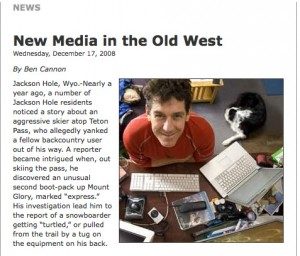22Local Featured in Planet Jackson Hole News
Planet Jackson Hole—a news source in the Jackson valley dedicated to community politics, arts, music and culture—has recently investigated the rise of blogs and alternative media sites cropping up in the tight knit mountain community. The topic hits close to home for us (Circumerro Media) as we have recently launched a hyperlocal online news platform: 22Local.

A concept that was carefully incubated, 22Local went live in beta version in early November. Expect to see an expanded release rolled out soon after the new year. The road is admittedly long ahead, but in true Kevin Costner form, we have faith that in building it, the new form of online news will come.
The article copy is pasted below, or see the original here. Note—it’s a lengthy read, so scroll to towards the bottom if you just want to “media snack” on the Circumerro portion.

